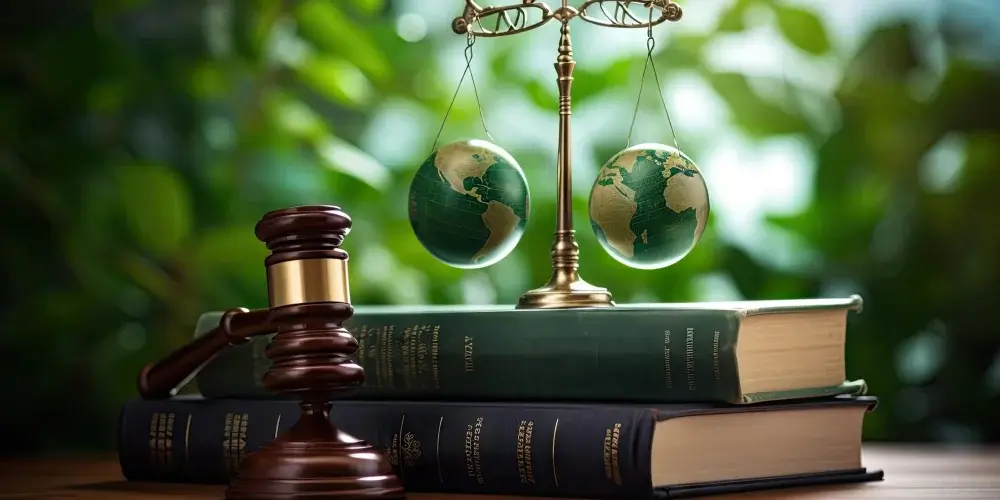

Air Quality and Climate Change: Legal Frameworks and Challenges
23/03/2024 Lana Mathews 738
Air pollution and climate change are two of the most pressing environmental issues facing the world today. In the United States, legal frameworks have been established to regulate air pollution and address its impacts on human health and the environment. This blog post will provide an overview of air pollution and its health and environmental impacts, legal frameworks for regulating air pollution, the role of the Clean Air Act in addressing air pollution and climate change, and current challenges and debates in air quality regulation.
Overview of Air Pollution and Its Health and Environmental Impacts
Air pollution is a complex mixture of gasses and particles that can have harmful effects on human health and the environment. The most common types of air pollutants include particulate matter (PM), nitrogen oxides (NOx), sulfur dioxide (SO2), and volatile organic compounds (VOCs). These pollutants can cause respiratory and cardiovascular problems, increase the risk of cancer, and contribute to premature death. Air pollution can also have environmental impacts, such as acid rain, smog, and damage to ecosystems.
Legal Frameworks for Regulating Air Pollution
In the United States, air pollution is regulated by a combination of federal and state laws and regulations. The Clean Air Act (CAA) is the primary federal law governing air pollution. The CAA establishes national air quality standards for common pollutants, such as PM and ozone, and requires states to develop implementation plans to meet these standards. The CAA also regulates emissions from mobile sources, such as cars and trucks, and stationary sources, such as power plants and factories.
Federal and state regulations typically require facilities that emit air pollutants to obtain permits and comply with emission limits. Enforcement actions can be taken against facilities that violate these regulations, including fines, penalties, and criminal prosecution.
The Role of the Clean Air Act in Addressing Air Pollution and Climate Change
The Clean Air Act has played a critical role in reducing air pollution and improving air quality in the United States. Since its enactment in 1970, emissions of common pollutants have decreased by more than 70%, despite significant increases in population and economic activity.
In recent years, the CAA has also been used to address climate change. In 2007, the Supreme Court ruled that greenhouse gasses (GHGs) are air pollutants under the CAA, paving the way for the Environmental Protection Agency (EPA) to regulate GHG emissions from mobile and stationary sources. However, efforts to regulate GHGs have faced significant challenges and debates, including legal challenges from industry and opposition from some members of Congress.
Current Challenges and Debates in Air Quality Regulation
Despite progress in reducing air pollution, there are still significant challenges and debates in air quality regulation. One major challenge is addressing GHG emissions, which are the primary driver of climate change. While the CAA provides a framework for regulating GHGs, there is ongoing debate over the scope and stringency of these regulations, as well as the role of other policies, such as carbon pricing, in addressing climate change.
Another challenge is ensuring that regulations are effective and efficient, while minimizing burdens on industry and consumers. There is ongoing debate over the costs and benefits of air quality regulations, as well as the appropriate role of federal and state governments in regulating air pollution.
Air pollution and climate change are complex and pressing issues that require effective legal frameworks and policies. The Clean Air Act has played a critical role in reducing air pollution and improving air quality in the United States, but there are still significant challenges and debates ahead. By continuing to strengthen and enforce air quality regulations, and by addressing the challenges of climate change, we can protect public health, the environment, and future generations.
Recent Blogs
Building a Diversified Inves ...
26/01/2025 1603
Integrating AI and Machine L ...
24/01/2025 1147
Health Insurance Regulations ...
22/01/2025 2244
Recognizing Signs of Mental ...
20/01/2025 2232
Understanding Employers' Leg ...
18/01/2025 1248
Trending Blogs
Interest Rates: How They Aff ...
20/06/2024 12537
Client Retention: Building S ...
20/06/2024 10602
Introduction to Common Law: ...
21/06/2024 9641
Common Types of Criminal Charges
02/03/2024 8825
Corporate Finance Law: Raisi ...
04/06/2024 8530











